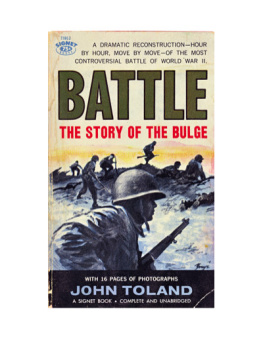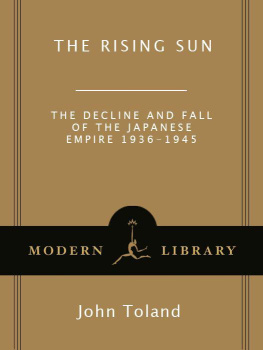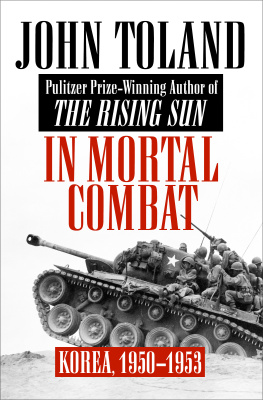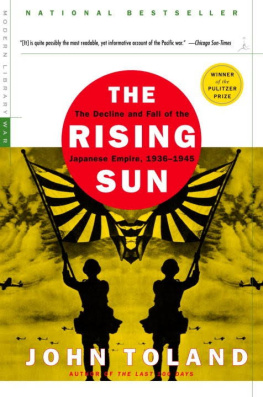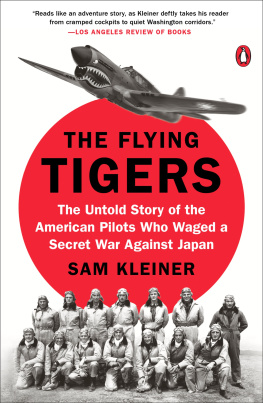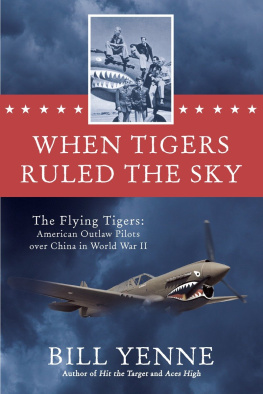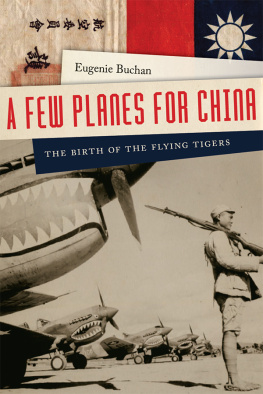The episode of the Flying Tigers has always been of great fascination to Americans, perhaps because of its adventure-yarn qualities, villains, derring-do, and of course success in the face of great odds. this book takes the information available and presents it in exciting style.
Library Journal
Presented vigorously and faithfully exciting and full of suspense.
The Christian Science Monitor
JOHN TOLAND was born in La Crosse, Wisconsin, and educated at Phillips Exeter Academy, Williams College, and the Yale Drama School. During World War II he served in the U.S. Armys Special Services Division. After the war he came to New York City and began his successful writing career. Among Mr. Tolands many books are Battle: The Story of the Bulge and the highly acclaimed biography Adolf Hitler.
THE LAUREL-LEAF LIBRARY brings together under a single imprint outstanding works of fiction and nonfiction particularly suitable for young adult readers, both in and out of the classroom. The series is under the editorship of Charles F. Reasoner, Professor of Elementary Education, New York University.
ALSO AVAILABLE IN THE LAUREL - LEAF LIBRARY :
TRANSPORT 7-41-R, by T. Degans
CEREMONY OF INNOCENCE, by James Forman
CODE NAME VALKYRIE, by James Forman
RING THE JUDAS BELL, by James Forman
THE CRYSTAL NIGHTS, by Michele Murray
THE HOURS OF THE MOON, by Gene Smith
SOCIALISM, by James Forman
COMMUNISM, by James Forman
FASCISM, by James Forman
CAPITALISM, by James Forman
Copyright 1963 by John Toland
All rights reserved. Published in the United States by Random House Childrens Books, a division of Random House LLC, a Penguin Random House Company, New York. Previously published in paperback in the United States in 1979 by Dell Publishing Co., Inc, an imprint of Random House Childrens Books, a division of Random House LLC, a Penguin Random House Company, New York.
Laurel-Leaf and the colophon are registered trademarks of Random House LLC.
Visit us on the Web! randomhousekids.com
Educators and librarians, for a variety of teaching tools, visit us at RHTeachersLibrarians.com
eBook ISBN: 978-0-553-53508-2
Random House Childrens Books supports the First Amendment and celebrates the right to read.
Photograph credits: United Pres, .
v3.1
To Rogers Terrill
Acknowledgment
Numerous agencies, organizations and individuals made this book possible. I would like to thank Dr. Albert Simpson, Margo Kennedy and Clark F. Palmer of the Air University Archives at Maxwell Air Force Base, Alabama; Judge Israel Wice and Charles Romanus of the Office of the Chief of Military History, Department of the Army; Lieutenant Colonel C. V. Glines, Major Gene Guerny and Mrs. Alice Martin of the Magazine and Book Branch of the U.S. Air Force; Lieutenant Colonel Robert Prentiss of the Office, Chief of Information, U.S. Army; Edith Midgette, Office of News Services, Department of Defense; and Colonel E. R. Mason, Major Fred Mitchell and W. N. Sholl of the Fourth U.S. Army Information Office, Fort Sam Houston, Texas.
Among the libraries which contributed greatly to the book, I should like to mention the Historical Archives in Alexandria, Virginia; the Library of the Office of the Chief of Military History, Department of the Army, Washington, D.C.; and the Air University Library at Maxwell Air Force Base, Alabama.
I am also indebted to many participants in the events related in the book, who told their personal stories. Those who were particularly generous with their time include Joseph W. Alsop, Thomas G. Corcoran, Colonel Ed Rector and David Tex Hill. Finally I would like to thank Mrs. Claire Lee Chennault and Colonel Fred C. Milner for reading the manuscript, and the officers and members of the 14th Air Force Association for their assistance.
Contents
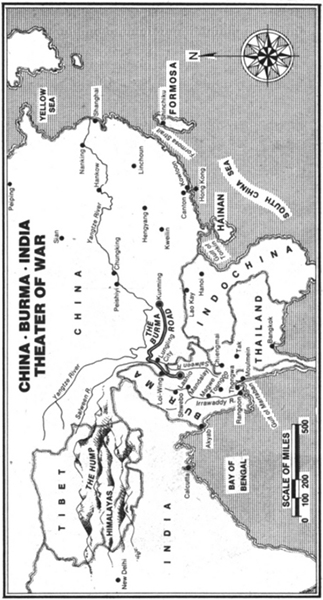
OLD LEATHERFACE

1
The big Pan American clipper took off from Hawaii and headed east for the United States. It was the middle of October, 1940. Almost everyone aboard was well aware that war between America and Japan was brewing, but none more so than a man of fifty who was studying a notebook as if his life depended on it. He was of average size, stocky, muscular and supple. He had dark, stubby hair graying at the temples. His weather-beaten face was rugged and so deeply lined it might have been chipped from rock.
The mans name was Claire Lee Chennault, and he was a former United States Air Corps acrobatic flier and flying school director. After ten years service he had resigned his captaincy in 1937 to become a colonel, and the foremost ace, in the Chinese air force. For the past three years he had been chief air strategist for Chiang Kai-shek, leader of the Chinese people in the war against Japan.
The fighting had started on a peaceful July night in 1937 when a company of Japanese soldiers suddenly crossed the Marco Polo Bridge outside Peiping and invaded Chinese territory. Chinese soldiers protested and there was an exchange of fire. Japans long-laid plans to dominate Asia and the islands of the Pacific had officially begun.
Chinaalready disunited by years of civil warseemed to be completely open to conquest. But Chiang Kai-shek, a former disciple of the great Chinese revolutionary, Dr. Sun Yat-sen, mobilized an army and began a gallant, if apparently hopeless, defense.
Chennault believed that Chinas war with Japan was also Americas. He was sure Japan would eventually turn to the east and attack the United States. So he had volunteered his services to Chiang, and by 1940 the former American captain was affectionately known all over China as Old Leatherface.
Only a few days earlier, Chiang Kai-shek had summoned Chennault to Chungking. The Chinese air force, said the Generalissimo, was now so feeble it could do little to stem the terrifying bombings. Unless the slaughter was stopped, Chiang Kai-shek was afraid his people would have to surrender.
But he had a last, desperate plan. Why not buy the latest American fighter planes and hire American pilots to fly them? Chennault shook his head. England was now fighting for her life against Nazi Germany and any planes not needed for the United States Army or Navy were being sent to Europe.
Even so the Generalissimo ordered him to fly to America immediately. Work out the plans for whatever you think you need. Do what you can to get American planes and pilots.
By the time the clipper neared California, Chennault had his plan. And he knew it would work. For three years he had been personally fighting Japanese pilots in his Curtiss Hawk 75. Although only the Chinese leaders knew it, he had already destroyed more planes in combat than any other American. Chennault was confident that young, experienced pilots trained in his unorthodox tactics could knock down five enemies for every loss. A small group of such men, moved around China like a mobile aerial fire department, could stop the Japanese bombings.


